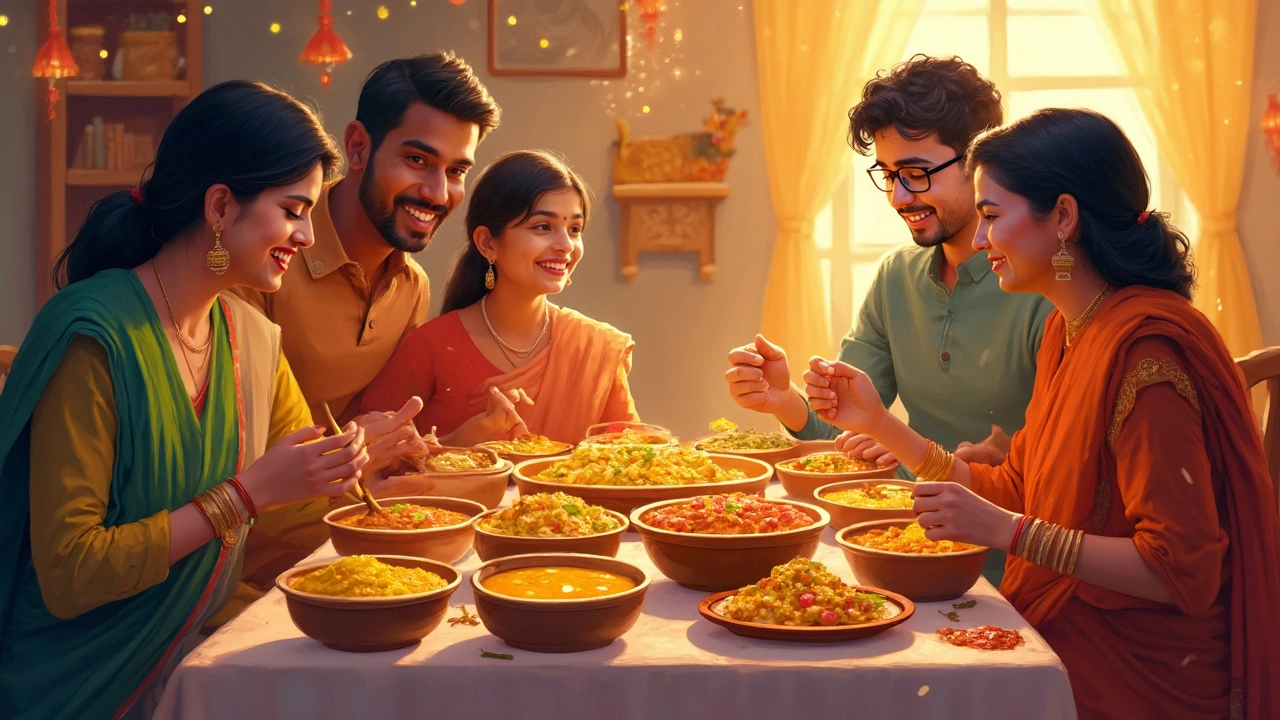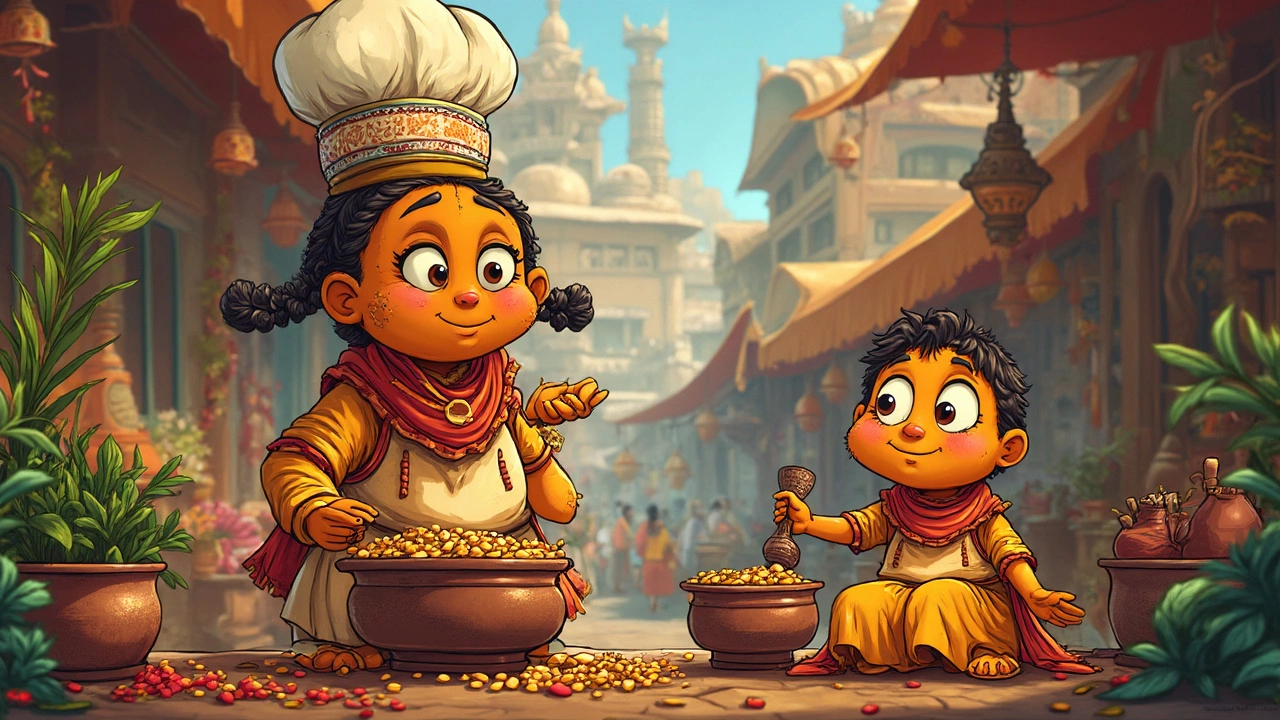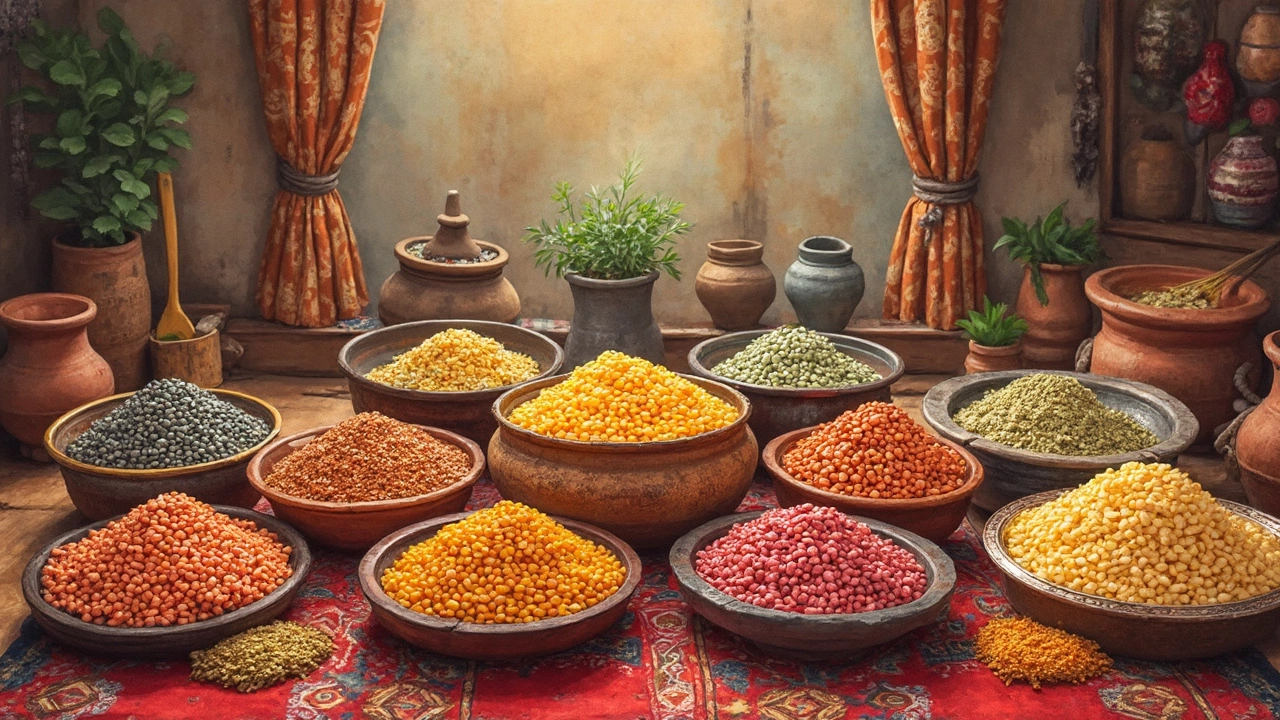Alright, let's break this down. If you're new to Indian cooking, you might be wondering what the fuss is all about distinguishing dal from lentils. Aren't they just beans? Well, not quite! Dal isn't just an ingredient but a dish, and lentils are only part of the equation.
First things first, dal can refer to both split lentils and the dish prepared using them. Yep, a bit confusing, right? But hang tight; it gets clearer once you dive into the kitchen. Dal is integral to Indian cuisine, providing protein and flavors that vary widely depending on the lentils or legumes used.
On the other hand, lentils are a type of legume. Think of them as the raw, uncooked little gems that come in various colors – red, green, yellow, black, you name it. Not all lentils are destined to become dal, but when they are, magic happens.
- What's Dal?
- Understanding Lentils
- Cultural Importance in Indian Cuisine
- Cooking Tips and Tricks
- Popular Dal Recipes
What's Dal?
So, what exactly is dal? You might have seen this on Indian menus or heard it float around in cooking conversations, but let’s get to the nitty-gritty. Basically, dal is both an ingredient and a dish. Sounds like wearing two hats, right?
When you’re talking about the ingredient, dal refers to split pulses, like lentils, peas, or beans. Picture them as tiny powerhouses packed with protein and essential nutrients. Loved by millions across India and beyond, these pulses make up a massive part of vegetarian diets. The magic of dal as a dish is how these humble ingredients transform when cooked with the right spices.
The most recognizable form of dal is the cooked, soupy dish, often served with rice or roti. This dish is a staple in Indian households, cherished for its flavor and adaptability. Whether it’s made spicy, tangy, or mild, there's a dal recipe for every palate. Variations galore! For instance, 'Toor Dal', 'Chana Dal', and 'Moong Dal' cater to different taste buds and regional preferences.
Here’s a cool fact—India grows over 70% of the world’s lentil production. Now that’s a lot of dal on the table! The crafting of dal can vary significantly from one region to another, demonstrating the diversity and creativity in Indian cooking.
As an everyday dish, dal's versatility shines through in its simplicity. You can dress it up with spices or keep it plain. Either way, it's always a comforting bowl of goodness. It's that dish that makes any home-cooked meal feel complete, sometimes bringing family and friends closer over meals and shared stories. Next time you hear someone say 'dal,' you'll know they're talking about a beloved staple that's as much about taste as it is about tradition.
Understanding Lentils
Lentils are these tiny powerhouses packed with not just protein, but also fiber, iron, and B vitamins. They're a part of the legume family and have been feeding the world for ages. Super versatile and available in a variety of types, each brought its unique texture to the table.
In the culinary world, lentils are categorized mainly by their color and size. Here's a quick rundown of some popular ones:
- Green Lentils: They hold their shape well and have a peppery flavor. Great for salads and side dishes.
- Red Lentils: Often used in dal dishes. They cook quickly and have a slightly sweet taste, turning soft and mushy when cooked.
- Brown Lentils: Probably the most common one to spot. They're mild, hold shape decently, and often used in soups.
- Black Lentils: Also known as beluga, these tiny lentils resemble caviar and are great for both salads and as a side dish.
Preparing lentils is straightforward, and that's why they're so popular. A quick rinse and they are ready to hit the pot. Unlike beans, they don't necessarily need soaking, but a quick wash helps remove any debris or dust.
Despite their tiny size, lentils are a crucial ingredient in many vegetarian diets, especially in parts of Asia. For those counting calories, they're a dream come true—delivering nutrition without excessive calories! Check this out:
| Lentil Type | Cooking Time | Calories (per 100g) | Protein (g) |
|---|---|---|---|
| Green Lentils | 35-45 mins | 116 | 9 |
| Red Lentils | 20-30 mins | 105 | 8.9 |
| Brown Lentils | 35-45 mins | 116 | 9 |
| Black Lentils | 25-30 mins | 120 | 8.5 |
Understanding these lentils and learning when to use what really opens up a world of cooking options. Whether it's a hearty side or the main star in a dal, lentils are never boring!

Cultural Importance in Indian Cuisine
When it comes to Indian cuisine, dal is more than just food; it's a ritual, a tradition, and sometimes, even a comfort hug in a bowl. Every region in India has its own version of making dal, reflecting the diverse culinary tapestry of the nation. It's like the common bonding meal that transcends languages and boundaries.
Dal dishes often make up a staple part of the diet in most Indian households. Typically, it’s enjoyed at least once a day, served with hot rice or roti. In different parts of India, dal can be sweet, spicy, or tangy, all based on local preferences and spices available. This versatility reflects the adaptability and cultural blending inherent in Indian cooking.
Religious and cultural events often feature dal. For instance, festivals like Diwali and Holi might see elaborate spreads of dishes with dal taking center stage. It represents sustenance and hospitality. In many religious practices, providing dal as a food offering is common, symbolizing nourishment and gratitude.
Aside from its cultural significance, dal is also a nutritional powerhouse. Many vegetarians, and the massive vegetarian culture in India, rely on lentils for their protein intake. Lentils are rich in protein and fiber, making them an important dietary choice in a country where vegetarianism is widespread.
Interestingly, dal serving styles can also tell tales. In places like Kerala, a thin dal curry called 'Parippu' is the first serving in the traditional feast known as 'Sadya'. Contrast this with thick dals from Northern India like 'Dal Makhani', often cooked with cream and butter, showcasing the same ingredient through different culinary lenses.
| Region | Popular Dal Dish | Unique Ingredient |
|---|---|---|
| Punjab | Dal Makhani | Butter |
| Bengal | Cholar Dal | Coconut |
| Gujarat | Gujarati Dal | Jaggery |
| Tamil Nadu | Sambar | Tamarind |
So, the next time you savor a bowl of dal, remember it's not just a meal—it's a piece of history and culture living on your plate.
Cooking Tips and Tricks
Cooking dal just right can be an art — and once you master it, your kitchen will smell like magic. Here’s how you can bring out the best in your next dal dish.
First off, soaking your lentils makes a world of difference. Even a short soak of about 20-30 minutes can reduce cooking time and give you a creamier dal. Plus, it makes digestion easier, which is always a bonus.
When it comes to spicing things up, the tadka (or tempering) is your best friend. A mix of cumin seeds, asafoetida, ginger, and garlic sautéed in ghee or oil brings warmth and depth to the dish. Add it just before serving or mix it in a half-cooked dal for more infusion.
Make sure you’re using the right lentil for your dish. For instance, red lentils cook super quickly and get mushy — great for a creamy texture. Yellow pigeon peas stay a bit firmer and are perfect for a more textured dal.
Ever tried adding vegetables? Spinach, tomatoes, or even a bit of bittermelon can add extra flavor and nutrients.
Don’t forget to season with salt only after the lentils are tender. Adding it too soon can make them tough. And if you want to elevate your dal to heavenly status, add a dollop of butter or cream at the end to polish off with richness.
- Pro tip: If you want to save the delightful spices and flavors in your dish, store dal in an airtight container and refrigerate. It can last up to three days, with the flavors getting even more intense and delicious.
With these tips, you can turn a simple bowl of dal into something that’s not just filling but soul-satisfying. So go ahead, try these out, and watch as your kitchen becomes the cozy hub of incredible aromas and smiles.

Popular Dal Recipes
Alright, so you're ready to whip up some delicious dal. Let's talk about a few popular recipes that you can try, whether you're a beginner or a seasoned cook. These dishes are sure to give you a taste of authentic Indian cuisine!
First up, we have the all-time favorite: Tadka Dal. This is a straightforward dish involving cooked lentils spiced up with a tempered mixture of oil, cumin seeds, garlic, ginger, and chili. Here's how you can make it:
- Cook your choice of lentils (yellow or red work best) until soft.
- In a separate pan, heat oil and add cumin seeds, let them crackle.
- Add chopped garlic, ginger, and green chillies—sauté until golden.
- Mix in turmeric and red chili powder for that aromatic punch.
- Add this tempering to your cooked lentils, stir, and enjoy with rice!
Next, we have Dal Makhani. It's a creamy, rich dish typically made with black lentils and kidney beans. Perfect for those cheat days when you want something indulgent:
- Soak black lentils and kidney beans overnight and then cook until tender.
- Blend tomatoes, ginger, and garlic into a smooth paste.
- In a pan, heat some butter and cook the tomato paste until it starts releasing oil.
- Add spices like garam masala and cook thoroughly.
- Combine with cooked lentils, simmer with some cream, and let it thicken.
- Serve with naan or steamed rice.
Ever heard of Chana Dal? It's less about lentils and more about split chickpeas, but it's as comforting as it gets. This one is great if you love a hint of sweetness:
- Soak and boil chana dal until soft, but not mushy.
- Heat oil, add cumin seeds, dried red chilies, and sliced onions. Cook until onions are golden.
- Mix in tomato, ginger, turmeric, and cook to a paste.
- Add boiled chana dal with water, simmer until you reach the desired consistency.
Each of these dishes highlights a unique flavor profile and approach, showcasing the diverse world of lentils beyond the everyday meal. The secret to a good dal? It all comes down to balancing the spices and letting those lentils soak in all that magic.
